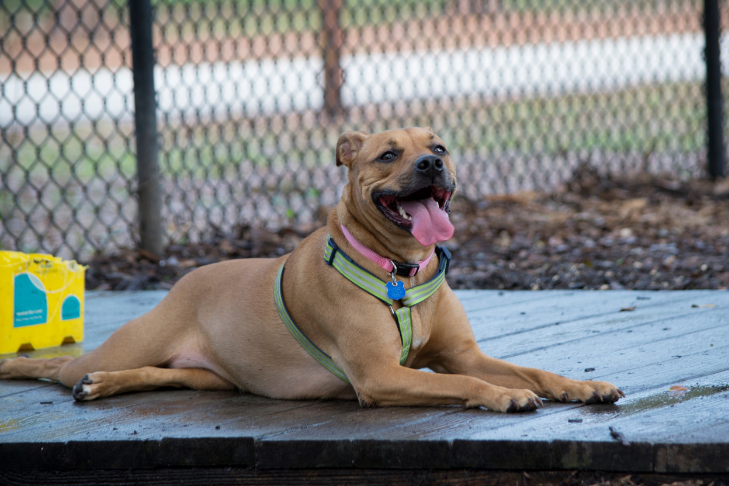Signs Your Dog is Overheating (and What to Do if They Are)

Who doesn't love a summer day with their dog? Outdoor adventures and spending time with our furry friends are the best, but the summer heat can sneak up on us. Keeping our pets safe during the summer months requires a little extra attention, especially for active pups, those who get strenuous exercise, or spend time in a hot car. Understanding the risks and knowing how to cool them down quickly is essential. We'll walk you through how to protect your pup from the dangers of overheating and what to do if it happens.
Understanding Canine Overheating
Dogs regulate their body temperature by panting, but when the heat and humidity are high, their cooling mechanisms can struggle. Overheating, also known as heatstroke, is a serious condition that can be life-threatening. It's important to recognize the signs early to prevent a dangerous situation.
Here are some common signs of overheating in dogs:
- Excessive panting: This is the most obvious sign, but pay attention to the intensity and effort. Is your dog panting heavily and struggling to catch their breath?
- Drooling: Increased salivation is another way dogs try to cool down, but excessive drooling can indicate overheating.
- Red or flushed gums: If your dog's gums are unnaturally red or bright pink, it could be a sign of heatstroke.
- Increased heart rate: You may notice your dog's heart beating faster than usual.
- Lethargy: Overheating can cause your dog to become tired and sluggish.
- Vomiting or diarrhea: These symptoms may indicate severe overheating.
- Coma or seizures: In extreme cases, heatstroke can lead to coma or seizures.
If you notice any of these signs, seek veterinary attention immediately.
Preventing Overheating in Dogs
Taking the right steps to prevent your dog from overheating is key to keeping your dog safe and healthy during the hotter months.
Here are some important steps you can take:
1. Exercise Wisely:
- Avoid strenuous exercise during the hottest part of the day. Early morning and late evening are the coolest times for walks and playtime.
- Choose shady areas for exercise: Look for parks or trails with plenty of shade.
- Take frequent breaks: If you're hiking or running with your dog, take frequent breaks in the shade to let them cool down.
- Adjust exercise intensity: Reduce the intensity of your dog's workout during hot weather. Shorten walks or runs, and avoid high-impact activities.
2. Stay Hydrated:
- Always provide fresh, cool water: Make sure your dog has access to plenty of water throughout the day, especially during and after exercise.
- Add ice packs to their water bowl: This helps keep the water cool for longer periods.
- Carry water with you: When you're on the go, bring a portable water bowl and plenty of water for your dog.
3. Never Leave Your Dog in a Hot Car:
- Even for a short time: The temperature inside a car can rise rapidly, even on a mild day. Leaving your dog in a car for even a few minutes can be dangerous, even with the windows slightly open.
- Find alternatives: If you're running errands, take your dog with you (if allowed) or find someone to watch them.
4. Pay Attention to Your Dog:
- Watch for early signs of overheating: Be alert to changes in your dog's behavior, panting, or energy levels.
- Know your dog's limits: Some breeds are more prone to overheating than others, and older dogs or dogs with health issues may be more sensitive.

What to Do if Your Dog Overheats
If you suspect your pup is overheating, act quickly:
- Move them to a cool, shaded area: Get them out of the sun and into a cooler environment.
- Apply cool water: Gently pour cool (not cold) water over your dog's body, focusing on their head, neck, and belly.
- Offer cool water to drink: Encourage your dog to drink cool water.
- Let them rest: Allow your dog to rest and recover in a cool place.
- Seek veterinary attention: Even if your dog seems to be recovering, it's important to call your veterinarian immediately. Heatstroke can cause internal damage that may not be immediately apparent.
What Not to Do If Your Dog Is Overheating
When your dog is overheating, it's natural to want to react as fast as possible. However, some actions can actually make the situation worse.
Here are some things to avoid:
- Don't force them to drink water: If your dog is already showing signs of heatstroke, they may be unable to swallow properly. Forcing them to drink could lead to aspiration, where water enters the lungs.
- Don't put them in an ice bath: While you want to cool them down, shocking them with ice water can actually cause further stress and even worsen their condition.
- Don't give them medication without vet approval: Never administer any medication to your dog without first consulting your veterinarian, especially if they're showing signs of heatstroke.
- Don't wait too long to get help: Even if your dog seems to be recovering after your initial cooling measures, you should seek veterinary care as a precautionary measure. Heatstroke can cause internal damage that may not be immediately apparent.
Keeping our dogs safe in the summer is a shared responsibility. By spreading awareness about the dangers of overheating and sharing these tips with other pet parents, we can help make sure that all pups enjoy a happy and healthy summer season.
Looking for more summer pet content?
Protecting Your Pet's Skin and Coat During Summer with CBD


